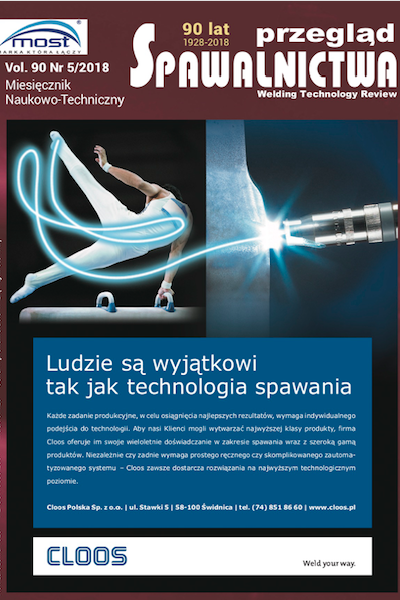Structural steels of historic welded bridges
Main Article Content
Abstract
The structural steels which were used in construction of the first welded bridges are presented. Properties of mild steels and early high strength steels caused that not all of them were suitable for welded structures. The development of historic weldable steels in bridge structures is re- viewed over codes and design requirements. Recognition of these steels in existing bridges is very essential to plan a retrofitting and strengthening range as well as possibility of using welding.
Downloads
Article Details
Creative Commons CC BY 4.0 https://creativecommons.org/licenses/by/4.0/
Welding Technology Review (WTR) articles are published open access under a CC BY licence (Creative Commons Attribution 4.0 International licence). The CC BY licence is the most open licence available and considered the industry 'gold standard' for open access; it is also preferred by many funders. This licence allows readers to copy and redistribute the material in any medium or format, and to alter, transform, or build upon the material, including for commercial use, providing the original author is credited.
References
Bryła S.: Most żelazny spawany elektrycznie na rzece Słudwi pod Łowiczem, Spawanie i Cięcie Metali, nr 11, s. 186-194, 1929.
Karśnicki W.: History of two welded bridges near Łowicz, Przegląd Spawalnictwa, nr 10-11, 1976.
Szelągowski F.: Pierwszy most kolejowy w Polsce z dźwigarami spawanymi, Inżynier Kolejowy, nr 11, s. 388-390, 1936.
Voormann F.: The use of Welding in Civil Engineering Condition of a Technological Innovation in the 1920s, Proceedings of the Third In- ternational Congress on Construction History, Cottbus, May 2009.
Bryła S.: Początki żelaznych konstrukcji spawanych w Niemczech, Spawanie i Cięcie Metali, nr 7, s. 112-115, 1929.
Wittfoht H.: Building Bridges. History. Technology. Construction, Beton-Verlag, Dusseldorf 1984.
Leonhardt F.: Reflections on 60 years of structural development, in Structural Engineering: History and development (Ed. R.J.W. Milne), s. 7-31, E & FN Spon, London 1997.
Czapliński K.: Dawne wyroby ze stopów żelaza, DWE, Wrocław 2009.
Hołowaty J., Wichtowski B.: Properties of structural steel in early railway bridges, Structural Engineering International, Vol. 23 (4), s. 512-518, 2013.
Hołowaty J.: Properties of high tensile steels in historical railway bridges, Proceedings of the Institution of Civil Engineers - Construction Materials, Ahead of print, s. 1-12, 2017, http://dx.doi.org/10.1680/jcoma.17.00012
Bryła S.: Nowe przepisy obliczania konstrukcji stalowych, Przegląd Techniczny, tom LXXVI (25), s. 901-905, 1937.
PN/H-84021. Stal do celów budowlanych i do konstrukcji stalowych. Lipiec 1949 r.
Pszenicki A.: Mosty stalowe nitowane, WK, Warszawa 1954.
Pilarczyk J.: Spawalność stali K 52, Hutnik, 9-10, s. 321- 329, 1950.
PN-54/H-84021. Stal do celów budowlanych i do konstrukcji stalowych. Zestawienie i klasyfikacja.
PN-63/H-84021. Stal dla budownictwa. Gatunki.
PN-64/H-84023. Stal węglowa o określonym przeznaczeniu i o szczególnych właściwościach. Zestawienie gatunków.
Kędzierski B.: Postęp techniczny w mostownictwie, WKŁ, Warszawa 1972.
Szelągowski F.: Mosty metalowe. Część I, WKiŁ, Warszawa, 1966.
Cholewo J., Sznurowski M.: Mosty kolejowe, WKiŁ, Warszawa 1970.
Dexter R.J., Fisher J.W.: Fatigue and Fracture, in: Bridge Engineering Handbook, CRC Press, Boca Raton Washington, 2000.
Hołowaty J., Wichtowski B.: Mała konstrukcja stalowego wiaduktu kolejowego i duży problem naprawczy, Przegląd Spawalnictwa, Vol. 88 (5), s. 5-9, 2016.
